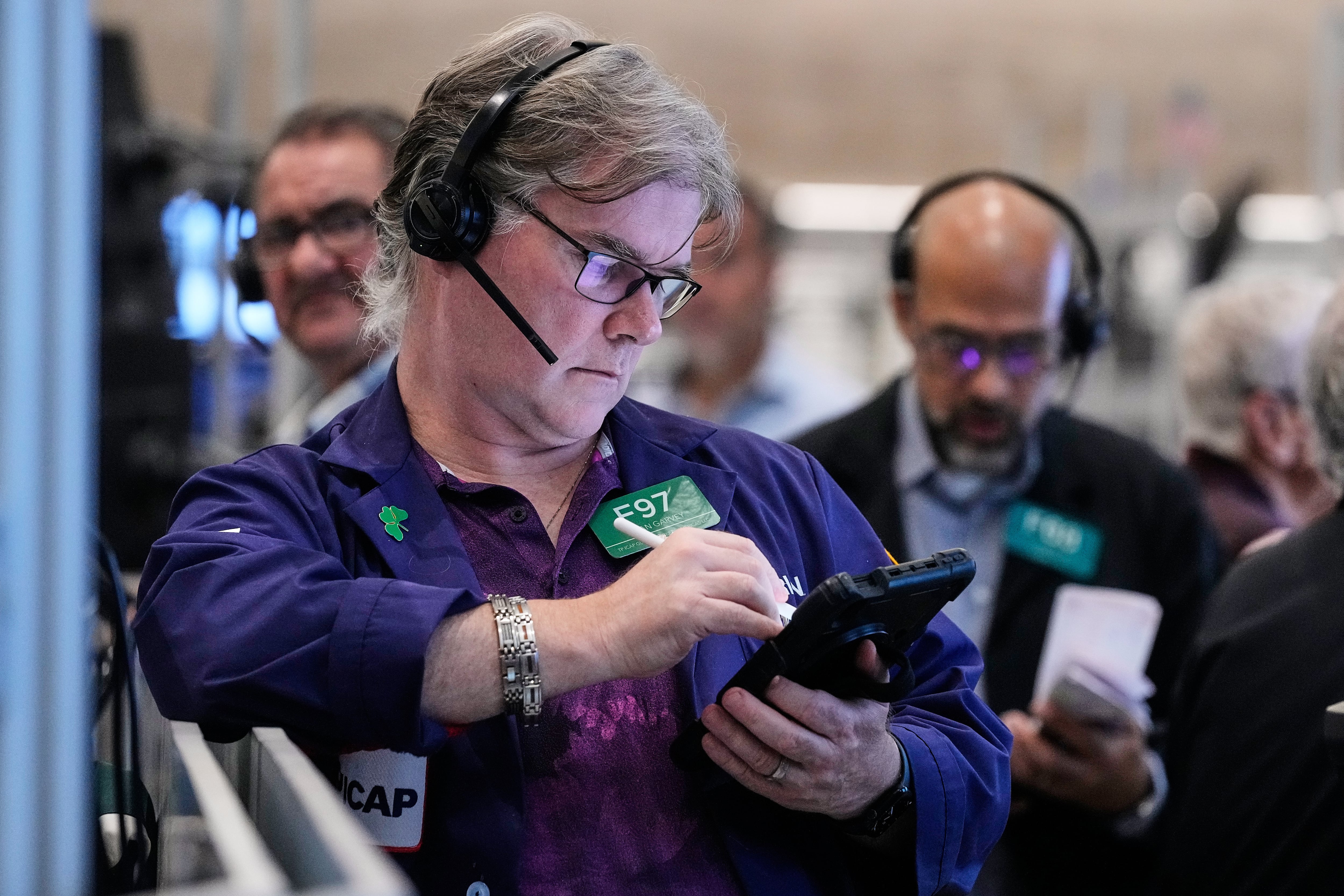WASHINGTON (AP) — The nation’s economy accelerated last quarter at a strong 2.8% annual pace, with consumers and businesses helping drive growth despite the pressure of continually high interest rates.
Thursday’s report from the Commerce Department said the gross domestic product — the economy’s total output of goods and services — picked up in the April-June quarter after growing at a 1.4% pace in the January-March period. Economists had expected a weaker 1.9% annual pace of growth.
The GDP report also showed that inflation continues to ease, while still remaining above the Federal Reserve’s 2% target. The central bank’s favored inflation gauge rose at a 2.6% annual rate last quarter, down from 3.4% in the first quarter of the year. Excluding volatile food and energy prices, so-called core PCE inflation increased at a 2.9% pace. That was down from 3.7% from January through March.
The latest figures should reinforce confidence that the U.S. economy is on the verge of achieving a rare “soft landing,” whereby high interest rates, engineered by the Fed, tame inflation without tipping the economy into a recession.
Helping boost last quarter’s expansion was consumer spending, the heart of the U.S. economy. It rose at a 2.3% annual rate in the April-June quarter, up from a 1.5% pace in the January-March period. Spending on goods, such as cars and appliances, increased at a 2.5% rate after falling at a 2.3% pace in the first three months of the year.
Business investment was up last quarter, led by a 11.6% annual increase in equipment investment. Growth also picked up because businesses increased their inventories. On the other hand, a surge in imports, which are subtracted from GDP, shaved about 0.9 percentage point from the April-June growth.
Fed officials have made clear that with inflation edging toward their 2% target level, they’re prepared to start cutting interest rates soon, something they’re widely expected to do in September.
“The Fed will be reassured’' by Thursday’s GDP report, said Bill Adams, chief economist at Comerica Bank. “With inflation trending lower ... the Fed thinks that it’s getting close to the time to cut interest rates.’’
Rate reductions by the Fed would, over time, reduce consumers’ borrowing costs for things like mortgages, auto loans and credit cards.
The state of the economy has seized Americans’ attention as the presidential campaign has intensified. Though inflation has slowed sharply, to 3% from 9.1% in 2022, prices remain well above their pre-pandemic levels.
This year’s economic slowdown reflects, in large part, the much higher borrowing rates for home and auto loans, credit cards and many business loans resulting from the Fed’s aggressive series of interest rate hikes.
The Fed’s rate hikes — 11 of them in 2022 and 2023 — were a response to the flare-up in inflation that began in the spring of 2021 as the economy rebounded with unexpected speed from the COVID-19 recession, causing severe supply shortages. Russia’s invasion of Ukraine in February 2022 made things worse by inflating prices for the energy and grains the world depends on. Prices spiked across the country and the world.
Economists had long predicted that the higher borrowing costs would tip the United States into recession. Yet the economy kept chugging along. Consumers, whose spending accounts for roughly 70% of GDP, kept buying things, emboldened by a strong job market and savings they had built up during the COVID-19 lockdowns.
The slowdown at the start of this year was caused largely by two factors, each of which can vary sharply from quarter to quarter: A surge in imports and a drop in business inventories. Neither trend revealed much about the economy’s underlying health.
The mighty heft of Amazon is pulling the U.S. stock market higher. The S&P 500 rose 0.6% Friday, erasing some of its slump from the day before and pulling closer to its all-time high set on Tuesday. The index is on track to close a third straight winning week and a sixth straight winning month, which would be its longest monthly winning streak since 2021. The Dow Jones Industrial Average added 65 points, and the Nasdaq composite climbed 1.1%. Amazon led the way after delivering a much bigger profit than analysts expected. Treasury yields eased a bit in the bond market.
President Donald Trump said he has decided to lower his combined tariff rates on imports of Chinese goods to 47% after talks with Chinese leader Xi Jinping on curbing fentanyl trafficking.
The Federal Reserve cut its key interest rate Wednesday for a second time this year as it seeks to shore up economic growth and hiring even as inflation stays elevated. The move comes amid a fraught time for the central bank, with hiring sluggish and yet inflation stuck above the Fed’s 2% target. Compounding its challenges, the central bank is navigating without much of the economic data it typically relies on from the government. The Fed has signaled it may reduce its key rate again in December but the data drought raises the uncertainty around its next moves. Fed Chair Jerome Powell told reporters that there were “strongly differing views” at the central bank's policy meeting about to proceed going forward.
The Federal Reserve will almost certainly cut its key interest rate on Wednesday and could signal it expects another cut in December as the central bank seeks to bolster hiring. A cut Wednesday would be the second this year and could benefit consumers by bringing down borrowing costs for mortgages and auto loans. Since Fed chair Jerome Powell strongly signaled in late August that rate cuts were likely this year, the average 30-year mortgage rate has fallen to about 6.2% from 6.6%. Still, the Fed is navigating an unusual period for the U.S. economy and its future moves are harder to anticipate than is typically the case.
Stocks are rallying toward more records ahead of a week packed with potentially market-moving events. The S&P 500 rose 1% Monday. The Dow Jones Industrial Average added 224 points, and the Nasdaq composite jumped 1.7%. Stocks also climbed in Asia ahead of a meeting on Thursday between the heads of the United States and China. The hope is that the talks could clear rising tensions between the world’s two largest economies. This upcoming week will feature profit reports from some of Wall Street's most influential companies and a meeting by the Federal Reserve on interest rates. Gold fell back toward $4,000 per ounce.
U.S. and Chinese officials say a trade deal between the world’s two largest economies is drawing closer. The sides have reached an initial consensus for President Donald Trump and Chinese leader Xi Jinping to aim to finalize during their high-stakes meeting Thursday in South Korea. Any agreement would be a relief to international markets. Trump's treasury secretary says discussions with China yielded preliminary agreements to stop the precursor chemicals for fentanyl from coming into the United States. Scott Bessent also says Beijing would make “substantial” purchases of soybean and other agricultural products while putting off export controls on rare earth elements needed for advanced technologies.
Some seniors say the Social Security Administration's cost-of-living adjustment won’t help much in their ability to pay for their daily expenses. The agency announced Friday the annual cost-of-living adjustment will go up by 2.8% in 2026, translating to an average increase of more than $56 for retirees every month. Eighty-year-old Florence, South Carolina, resident Linda Deas says it does not match the current "affordability crisis.” The benefits increase will go into effect for Social Security recipients beginning in January. Friday’s announcement was meant to be made last week but was delayed because of the federal government shutdown. Recipients got a 2.5% COLA boost in 2025 and a 3.2% increase in 2024.
Wall Street is heading for records after an update said U.S. households are feeling a bit less pain from inflation than feared. The S&P 500 climbed 1% Friday and was on track to top its all-time high set earlier this month. The Dow Jones Industrial Average jumped 529 points, and the Nasdaq composite rose 1.3%. Both are also heading toward records. The inflation data could clear the way for the Federal Reserve to keep cutting interest rates in hopes of helping the slowing job market. A strong earnings reports from Ford Motor and continued gains for AI stars also drove stocks higher.
Federal Reserve Chair Jerome Powell says that a sharp slowdown in hiring poses a growing risk to the U.S. economy.
Three researchers who probed the process of business innovation have won the Nobel memorial prize in economics for explaining how new products and inventions promote economic growth and human welfare, even as they leave older companies in the dust.













